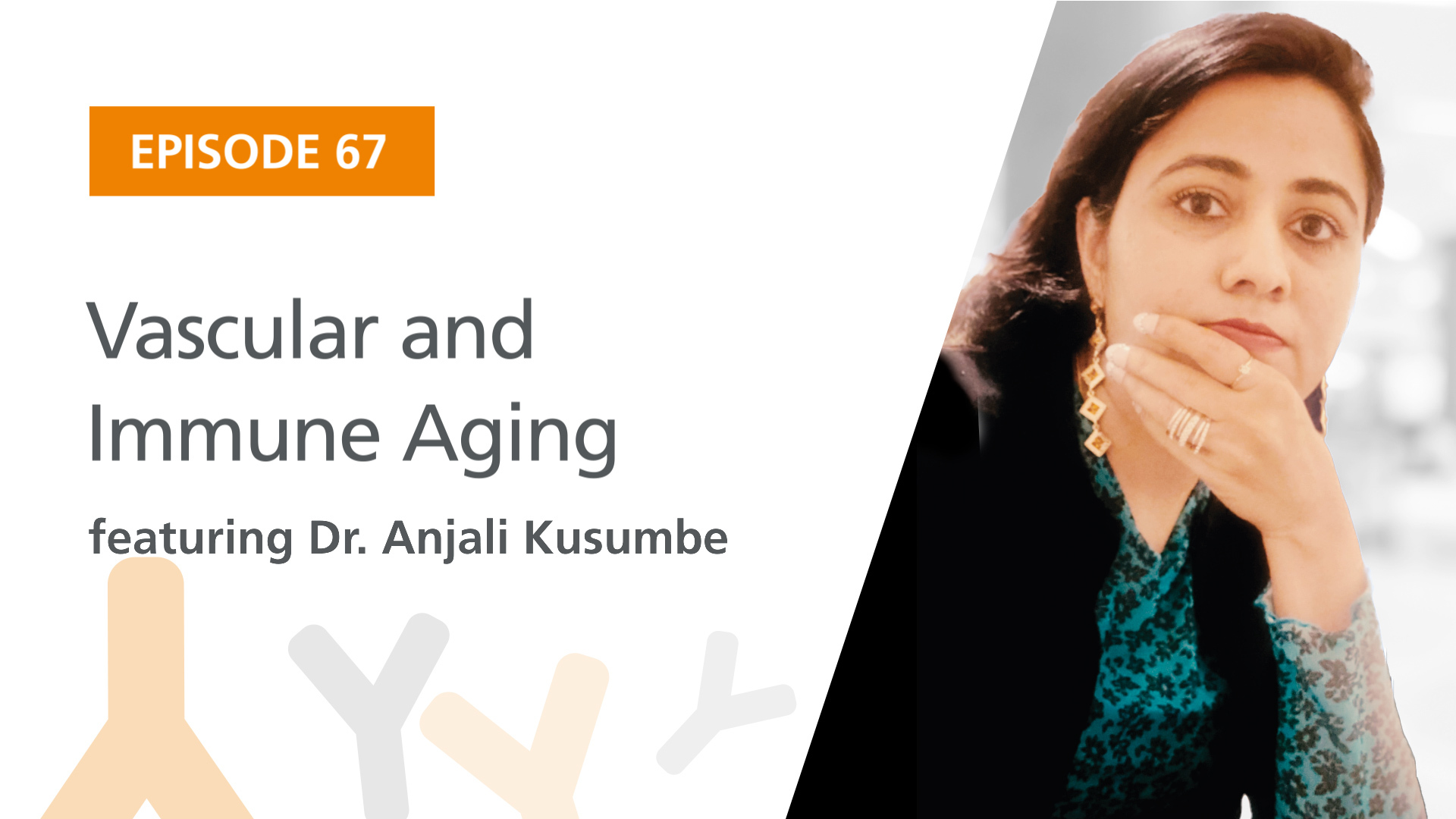Gehen Sie mit der App Player FM offline!
Ep. 67: “Vascular and Immune Aging” Featuring Dr. Anjali Kusumbe
Manage episode 385011612 series 2895470

Guest:
Dr. Anjali Kusumbe is a Group Leader and Director of the Tissue Imaging Centre at Oxford University. Her lab studies vascular changes over time with the aim of treating diseases. She talks about light sheet microscopy techniques, the aging immune system, and finding lymphatic vessels in bone.
Featured Products and Resources:
The Immunology Science Round Up
Herpesvirus in CAR T Cell Therapy – A population of ‘super-expressor’ CAR T cells can contribute to the reactivation of latent human herpesvirus 6.
Autoantibodies in NF-κB2 Deficiency – Inborn errors of the alternative NF-κB pathway underlie the production of autoantibodies against type I interferons and predisposition to viral diseases.
A Rheumatoid Arthritis Atlas – Scientists built a single-cell atlas of rheumatoid arthritis synovial tissue.
Tregs After Exercise – Researchers identified Tregs as a key regulatory element that is activated in response to exercise and needed to support muscle adaptations.
Image courtesy of Dr. Anjali Kusumbe
91 Episoden
Manage episode 385011612 series 2895470

Guest:
Dr. Anjali Kusumbe is a Group Leader and Director of the Tissue Imaging Centre at Oxford University. Her lab studies vascular changes over time with the aim of treating diseases. She talks about light sheet microscopy techniques, the aging immune system, and finding lymphatic vessels in bone.
Featured Products and Resources:
The Immunology Science Round Up
Herpesvirus in CAR T Cell Therapy – A population of ‘super-expressor’ CAR T cells can contribute to the reactivation of latent human herpesvirus 6.
Autoantibodies in NF-κB2 Deficiency – Inborn errors of the alternative NF-κB pathway underlie the production of autoantibodies against type I interferons and predisposition to viral diseases.
A Rheumatoid Arthritis Atlas – Scientists built a single-cell atlas of rheumatoid arthritis synovial tissue.
Tregs After Exercise – Researchers identified Tregs as a key regulatory element that is activated in response to exercise and needed to support muscle adaptations.
Image courtesy of Dr. Anjali Kusumbe
91 Episoden
Alle Folgen
×Willkommen auf Player FM!
Player FM scannt gerade das Web nach Podcasts mit hoher Qualität, die du genießen kannst. Es ist die beste Podcast-App und funktioniert auf Android, iPhone und im Web. Melde dich an, um Abos geräteübergreifend zu synchronisieren.




